How to Import From China to Sell Profitably in 2025
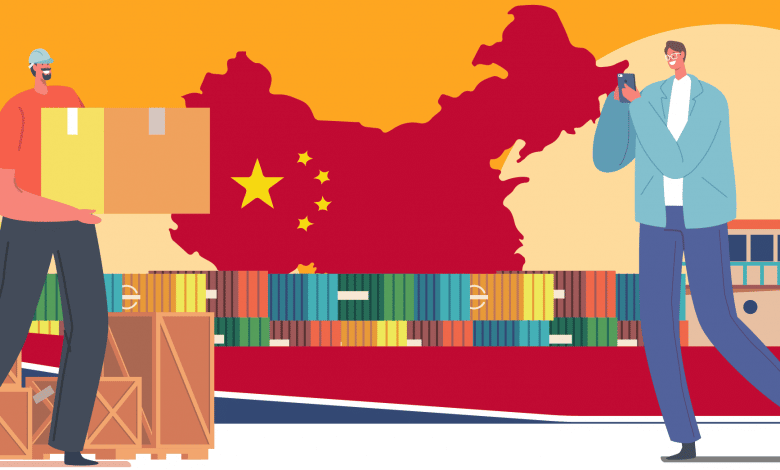
This mega guide will give you all of the information you need to get started importing from China: Everything from finding the perfect product, negotiating with suppliers, to figuring out the best way to ship your items.
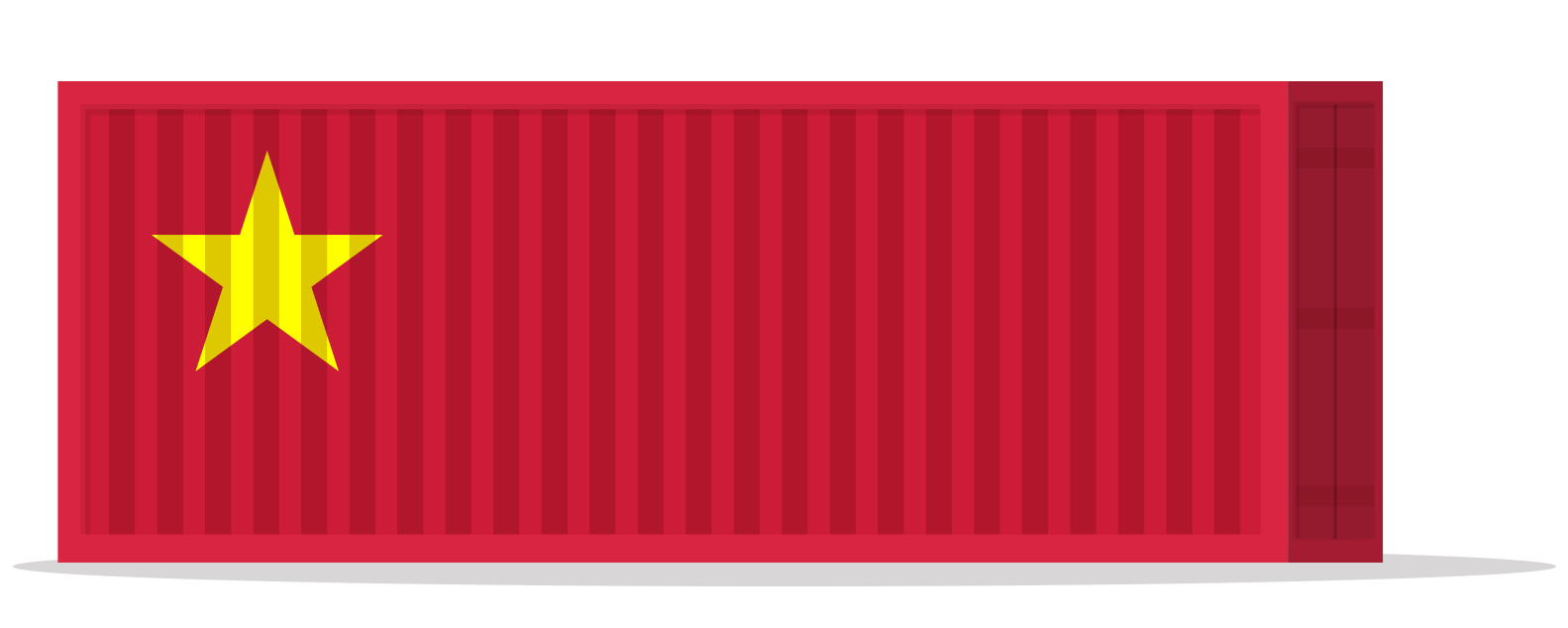
Why Import from China?
If you're thinking about importing from China, it's probably because you want to start selling on Amazon.
When it comes to selling on Amazon, there are basically three business models:
- Retail Arbitrage – Buying goods for cheap from stores and reselling them online
- Dropshipping – Buying goods from distributors and wholesalers and selling online
- Importing from China/Private Labeling – Finding products to import from China, sometimes with some light product improvements, and selling them online
The most popular business model when selling on Amazon is by far private labeling. When you buy a product on Amazon and you don't really recognize the brand name, but it's cheap and has a bunch of reviews, that product is probably from a private label seller who's imported some goods from China and listed them on Amazon. There are some Amazon sellers who still do retail arbitrage and dropshipping but it's less and less popular now.
There are many reasons why importing from China is so popular. Here are some of the reasons:
- High-profit margins (and much higher than drop-shipping) means you can make a lot of money
- It's easy to import into America (even for non-Americans)
- Developing real, tangible products and selling them is exciting
- No need to travel to China to find products
- But if you do travel to China it's fun and adventurous
China in 2025 – After COVID
As most of us remember, COVID started in Wuhan, China in late 2019. For over two years, China had a strict zero-COVID policy that would seed factories and even entire cities locked down for weeks or longer. In December 2022 it suddenly scrapped this policy. Since then, China is essentially “back to normal”.
How Much Money Can You Make Importing from China?
Ecommerce has been booming in recent years (and that's probably why you're considering importing from China) and there are a lot of people making a lot of money. Ecommerce has always been a quickly growing trend but it has become even more popular since the COVID-19 pandemic. With that being said, as the opportunity grows, so too does the amount of competition (more on that later).
I have personally started and sold numerous 7-Figure (meaning $1million+) ecommerce brands built around importing from China. The first business I sold was Anchoring.com in 2016 which I sold for $867,000 (see the entire post here). My EcomCrew partner Mike Jackness has done the same, selling his brand ColorIt.com for just over a million dollars in 2017 (see his podcast here). Today, we continue to run several brands in various niches from off-roading to baby products doing close to $10million in sales.
How much money can you make? Well, it all depends of course, but a big factor that will affect how much money you can make is how much money you have to invest. Most people are looking to either double or triple their money each year. So, for example, if I invest $1000 into buying products, I expect to make $2000 to $3000 at the end of the year. Some years are better than others of course and no matter how good the year is, how much money you can make will largely depend upon how much money you have to invest. Later in this article, I'll talk about how to stretch your money further and get access to lending.
Is it Too Late to Import and Sell on Amazon?
There is still a lot of opportunity to sell on Amazon, but the strategies that work now are quite a bit different than my first company Anchoring.com.
Previously, you could basically find a product to sell on Alibaba, put your name and barcode on it, and you're off to the races. Now, there's a lot more of a requirement to physically change products and make them a bit different than the competition as there's a flood of ‘me-too' products on Amazon.
I have an on-going series that chronicles starting a new brand that hit a million dollars in revenue in about a year. So there's still opportunity to sell on Amazon, it just takes different strategies than before.
What You Need to Get Started Importing
The most important thing you need to import from China is money to buy inventory. Generally, I recommend having at least $500 to buy inventory and ideally $2000-5000.
What you need
- $2000-5000 for purchasing products
- An Amazon.com Seller Central account
- Amazon Global Logistics setup (or another customs broker/freight forwarder)
What you don't need
- To be physically present in America or have an American EIN, SSN, or Business
- Have any Chinese language knowledge
You will also need an Amazon Seller Central account if you plan to sell on Amazon. This will cost you $39.99 a month.
Can I Still Import from China if I'm not American?
We have a lot of readers of this blog all over the place, including Canada, Europe, and India (I myself am Canadian). Thankfully, the United States makes importing products and selling them VERY easy for both Americans and non-Americans.
For smaller value shipments of $800 and below, you don't need any formal paperwork to import into America and you won't even pay any duties or taxes! For larger value shipments, the paperwork is very easy, even for non-Americans (and you won't need a U.S. business).
Needless to say, you do not need any Chinese language knowledge as well. Almost all Chinese suppliers who export have English language websites and sales catalogs and at least a couple of staff members with reasonable English.
How to Find Home Run Products to Import and Sell on Amazon
The big question you're all probably asking now is: how do I find a GOOD product to import from China?
When you're importing from China you're basically looking at private labeling products. This means you're taking an existing product, putting your brand on it, and possibly making some light product improvements.
When I'm looking for products to import I'm looking for three basic things:
- Little or no “optimized competition” on Amazon (this basically means their product pages on Amazon are poor, with bad images and little use of paid advertising)
- Products that can be profitable to sell
- Products that I can easily improve
I cover how to find products a lot more in the post how to find the perfect product to import from China and sell on Amazon.
Good and Bad Products to Import from China
China is the factory of the world but there are certain products which are good for small importers and others which are bad. Identifying good and bad products basically comes down to understanding two critical differences between China and Western countries:
- China is a developing country with different quality standards from the West
- China has different norms around intellectual property and there are a lot of counterfeit products
Chinese factories make a lot of crappy products but also make a lot of excellent products. One of the ways to avoid crappy quality products is to import simple products. Example products would be mouse traps, garlic presses, and furniture. More complex products are more likely to have quality issues such as electronics and electrical items. Several years ago, hoverboards became a trendy item but unfortunately they were banned from Amazon soon thereafter because many of them had severe quality issues and starting suddenly exploding – this is a good example of a complex product with poor quality.
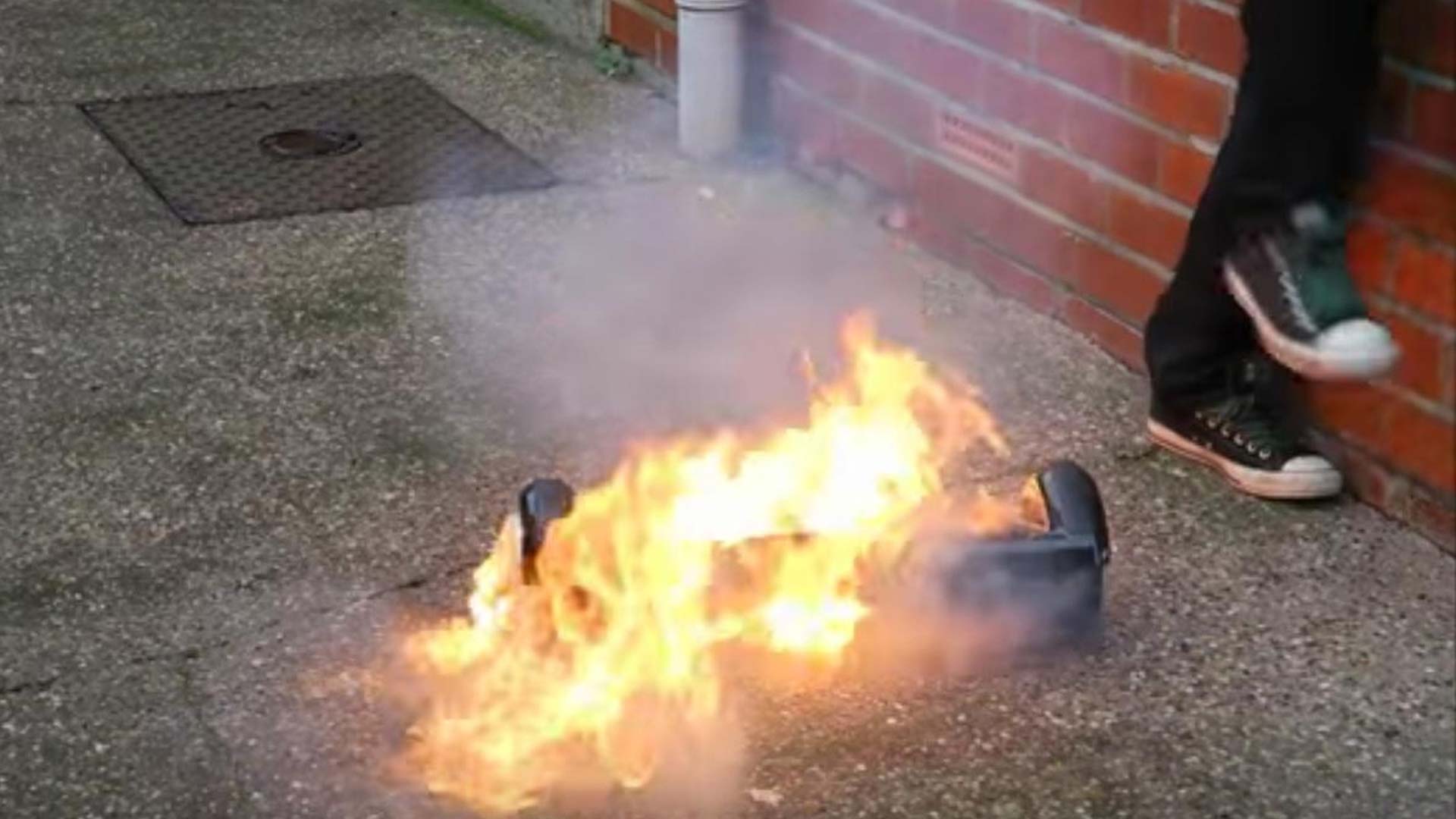
For nearly 10 years of running this blog, there's a few product categories that I routinely see new importers run into troubles with: electronics, electrical items, baby items, and digestible items.
Good products to import from China
- Simple
- Labor-intensive instead of technology intensive (i.e. sofa vs tablets)
- No patents or trademarks (“intellectual property” or IP)
Bad products to import from China
- Electronics, electrical items, baby items, and digestible items
- Complex
- Inherently dangerous products
- Products with a patent or trademark
Finally, China is home to a lot of knock-offs. You will find a wide variety of counterfeit products to import including products that violate trademarks, copyrights, and/or patents. It's a very bad idea to import counterfeit products – they may be seized at the border, Amazon may suspend your account, and even worse things can happen.
Don't do it.
Easily Find Import Regulations/Certifications from Amazon Seller Central
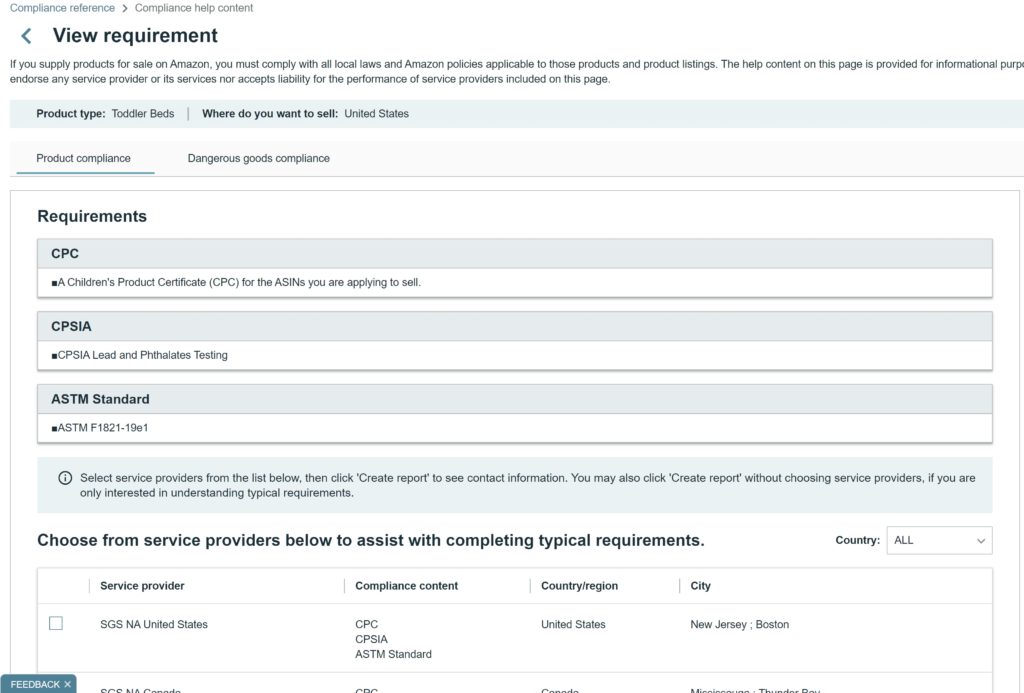
One of the the most horrifying things for an importer is their goods arriving into their country and then being notified that they need a certain certification before they can legally import the item. Nearly as bad is finding out that Amazon has certain restrictions on a product as well.
Amazon in 2021 made this process slightly easier with the Compliance Reference tool within Seller Central (Amazon's platform for selling products). You can access the tool here https://sellercentral.amazon.com/ckp/ (Seller Central login required). It's not entirely exhaustive and I recommend still checking with a customs broker beforehand, but it's better than going in completely blind.
Alibaba & Beyond: How to Find Great Suppliers in China
China is an incredibly safe country (the 32nd safest in the world). It has a strong legal system and being scammed is very rare.
Your primary concern will be ensuring quality products. Chinese factories won't steal your money but they may send you inferior quality products.
The most popular places to find suppliers are:
- Alibaba/Aliexpress
- GlobalSources
- 1688.com (basically the Chinese version of Alibaba)
- Trade shows such as the Canton Fair
- Using import records
- Yiwu
- Sourcing companies/trading companies
The most common place to find suppliers are on Alibaba and Aliexpress and we have an excellent guide on using Alibaba.
Alibaba is basically a directory of factories and suppliers in China. Aliexpress is very similar, but is basically a directory of trading companies (resellers of the factory's goods) and has higher prices but lower minimum order quantities (MOQ) than Alibaba.
Almost everyone will use Alibaba at some point in their importing journey. Even Chinese companies use it, although they'll normally use the Chinese version of the site, 1688.com. There's nothing wrong with Alibaba and it's very safe – the biggest issue is that everyone is using Alibaba and so it can be difficult to find products without dozens or hundreds of competitors already on Amazon.
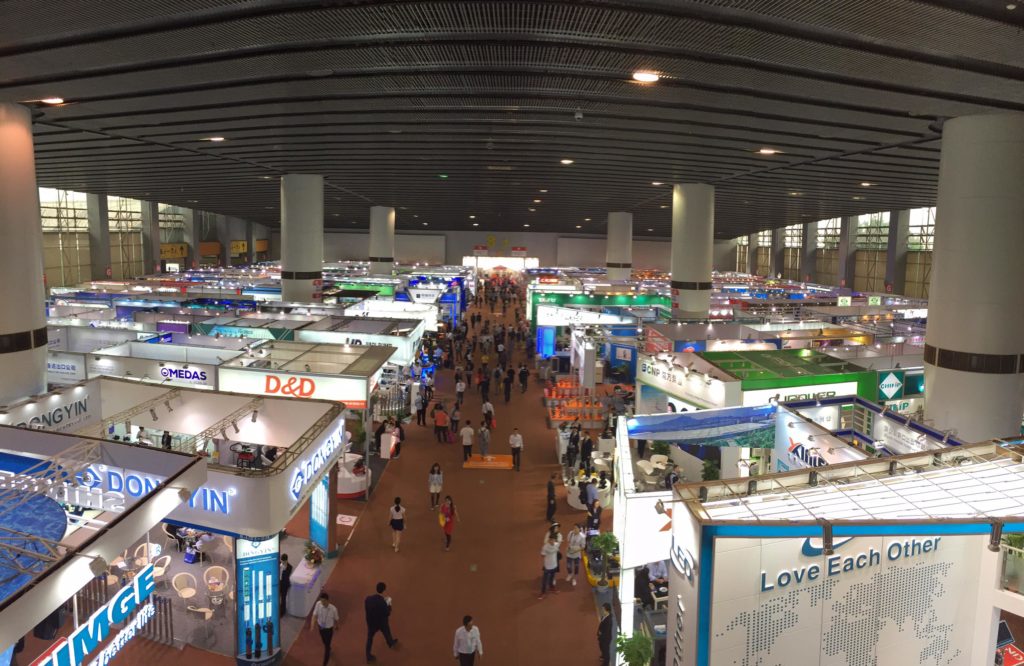
I like to try and find suppliers that aren't already selling to other Amazon sellers. Because of this, my preferred method for finding a supplier is by visiting trade shows (although that's quite a bit harder with COVID now). The best suppliers often do not advertise on Alibaba but do attend trade shows. The Canton Fair is the largest trade show in China but there are thousands of trade shows going on in China every year.
Sourcing companies and trading companies are basically companies who will do all the grunt work of finding products for you. They don't actually make any products themselves. A lot of people shun trading companies and sourcing companies because it'll often mean prices 5-15% higher than factories, but they have a lot of value including being able to source difficult to find products and ensuring higher quality standards.
Using Import Records to Find Your Competitor's Suppliers
One of the best ways to source products, is to find the suppliers that your competitors are already using. Most people are not aware, but in America, every company's import records are public information by law unless they make a formal request to the government to have their records hidden (which most companies don't do).

You'll need to use a software tool to find this information though. The best tool for this is by far Jungle Scout because it also has other product research tools bundled with it. I get a referral commission for referring you there but it's legitimately the best tool available by leaps and bounds.
Jungle Scout allows you to:
- Find out what Chinese supplier a competitor is using (great for finding products)
- See how much a supplier exports
- Find out what suppliers export specific products
See our article A Secret Weapon for Doing Supplier Research
Trading Companies vs Factories – Which is Best for You?
In China, there are two basic types of suppliers: factories and trading companies.
Factories manufacture products. Trading companies do not manufacture products but source lots of different products from different factories.
In general factories have lower prices than Trading Companies but higher minimum order quantities and less product selection.
Often the supplier will say in their company name manufacturer or trading company so they are quite easy to distinguish. If in doubt, ask your supplier what type they are.
Neither trading companies nor factories are inherently bad or good. Trading companies (normally) have lower MOQs and better quality controls. Factories (normally) have lower prices.
Ordering Samples and Making Your First Order
When you're getting ready to place your first order, there's two things you need to know about: samples and Minimum Order Quantities.
Samples when Importing From China
Once you find a supplier for your product, most people want to order a sample first from that supplier. A sample gives you an idea of the overall quality of the product from that supplier and is normally the last step before you proceed to a bigger order. Your supplier will likely charge you a sample fee as well as the cost of air shipping that product to you (which can be anywhere from $50+)
Minimum Order Quantities (MOQ) When Importing from China
When you're placing an order, almost every supplier will have a Minimum Order Quantity or MOQ. An MOQ is just the minimum amount of a product you need to order from that supplier. Normally it's around $2500 to $5000 worth of product, sometimes lower. This is one thing you can really negotiate with your supplier on, especially on your first order.
Even if you think you're going to sell a billion dollars worth of product in the first week, I suggest making your first order size as low as possible. You want to gradually build up the order size with your supplier over the course of two or three orders.
When you place your order, submit an actual Purchase Order (aka an invoice) that consists of the following things:
- Order quantity
- Price
- Shipping terms, i.e FOB, CFR, EXW (More on this later)
- Date the order will be completed
You can just send a plain email telling your supplier you want to buy 100 widgets but it doesn't look very professional. I've made your life easy and provided a free sample purchase order (Excel) you can download here.
How to Negotiate Rock Bottom Prices and Low MOQs
The first thing you must do before trying to negotiate any pricing is to get multiple quotes, ideally from three or more suppliers. This will tell you what the normal cost of your desired products is.
Order several samples and try selling them on Amazon before committing to a larger order.
In China, there is a golden rule: quality is directly related to price. Exceptionally low priced items normally mean exceptionally low quality. Another reason for a low price can be:
- The quality is significantly lower than others
- Different shipping terms (i.e. EXW instead of FOB)
- Significantly higher minimum order quantity (MOQ)
Once you determine what a normal cost is for your items you can try to negotiate pricing. However, prices in China are becoming more and more fixed and negotiation is becoming more difficult. A 5-10% discount off of quoted prices can often be significant.
Where you can negotiate is minimum order quantities (MOQ). Like I mentioned, often you can negotiate the suppliers quoted MOQ down by 50% or more.
In the future, when you start to place larger and larger orders, you can start to negotiate more on price. In the beginning though, you don't have a lot of leverage.
Payment Terms and Making Payments
When you are arranging payment terms with your supplier, the most common terms you will come across will be 30/70. That means you pay 30% when the order is placed and 70% upon completion. Never accept an order requiring a 100% deposit unless the order is small (less than $2000).
If your order is relatively small, under $2000 or so, your supplier will normally accept payment via Alibaba's payment solution called Aliababa Trade Assurance. This payment method gives you pretty good assurance your supplier will actually ship your products – it won't protect you much on quality issues though.
Once you get to larger orders ($2000+) payment is almost always made by wire transfer or sometimes referred to as TT (telegraphic transfer). Payment by credit card or PayPal is generally not accepted for orders larger than $5000 or so.
Payment is almost always in US dollars.
How to Ensure You Receive High-Quality Products
Your biggest concerns when importing from China will be to ensure that you're getting quality products.
Related Listening: E174: Avoid Getting Scammed When Importing Products From China
Quality standards are the biggest difference between Chinese manufacturing and Western manufacturing. Western countries (such as Amazon buyers) have much higher quality standards than in China.
The first shipment of products you receive will probably be some of the best quality products that that factory produces. Over time the quality can fade if you're not careful. Your supplier will start to substitute materials for inferior materials. This is why you want to specify in your Purchase Order the core components of your product as much as possible. For example, if you're selling t-shirts you want to specify exactly what type of fabric should be used. If you're selling a cutlery set, specify exactly what type of stainless steel should be used. Here are some other examples of materials you want to specify:
- Fabric type and weight
- Button type
- Critical Dimensions
As long as you tell your supplier exactly what type of materials they should use in your product, they normally won't substitute them. If you don't tell them, they'll assume it's not important to you and substitute materials at their own will.
Related reading: How to Avoid Crappy Quality Products when Importing from China
Inspect your Shipments: We have an in-depth guide on how to conduct a third-party inspection. A third-party inspection costs about $300 and a company like AsiaInspection will send a person out to your factory, for an entire day, to inspect your products. There's no reason not to do it.
Show your supplier that quality is important to you. Inform your supplier of every defect you receive on an order and ensure they fix it on the next order.
Shipping and Logistics
In my own personal experience and after helping other first-time importers, having your goods shipped to you and receiving them is one of the most stressful and most challenging aspects of importing.
Three Ways to Ship Your Products: Air Courier, Air Freight, and Sea Freight
There are three ways to ship your items from China: air courier, air freight, and sea freight.
Air courier is simple for most people to understand. UPS, FedEx, and DHL are air courier services. This is what they call a door-to-door service. Your supplier ships your products and they arrive wherever you want them to arrive, i.e. your home or Amazon warehouse. The courier also has customs brokerage services, to help you pay your duty, so you don't need to worry about getting a customs broker.
Air Freight and Sea Freight differ vastly from air courier (FYI there is no such thing as sea courier). These services are arranged through a freight forwarder and typically are quoted from China to some airport or sea port, i.e. to the sea port of Long Beach (near Los Angeles) or Los Angeles International Airport (LAX).
You will either have to arrange to have your goods picked up or ask your freight forwarder to arrange to have them shipped to your final destination (which will involve a significant surcharge). They will not provide customs brokerage (at least not for free).
Air Courier
- 150 lbs or less
- $10/kg+
- 2-5 Days
Air Freight
- 200-500 lbs
- $5-7/kg
- 2-10 Days
Sea Freight
- 500+ lbs
- < $1/kg
- 14-35 Days
Sea freight is always quoted by volume whereas air shipments are quoted by weight, but a good rule of thumb is that sea freight works out to less than $1 per kg.
Air freight and sea freight are quite a bit more complicated than air courier the first time around. They are also much cheaper. Air freight is about half the cost of air courier and sea freight is about 10% the cost of air courier.
Two of the most popular shipping companies (called freight forwarders) for air freight and sea freight are Freightos.com and FlexPort.com. You can always just ask your supplier to arrange the shipping of your goods and to simply bill you for them.
Related EcomCrew Reading: All About International Freight and Step by Step Instructions
Shipment Terms
In international trade, there is something referred to as Incoterms. Popular incoterms include FOB and EXW.
With FOB shipping terms, your supplier will pay for all the costs (including overland transportation in China) to get your shipment to the port and export fees. With EXW, you will pay for all of this. There is no difference in complexity but EXW will always cost you more than FOB (normally $300-500+ more).
The easiest thing to do is to always ask your supplier to quote you FOB terms.
Related EcomCrew Reading: Why Shipment Terms Matter: EXW, FOB, CIF, etc.
Customs, Tariffs, and the Magic $800 De Minimis Value
In America, orders under $800 do not have any duties applied to them. This is called the de minimis value. Orders above this amount will be charged applicable duties.
Under $800
- No duties
- No formal entry required
- No customs bond
- No customs broker needed
$800-$2500
- Has duties
- No formal entry required
- No customs bond
- No customs broker needed
$2500 +
- Has duties
- Requires formal entry
- Has customs bond
- Customs broker generally needed
For orders under $2500, you will not need what they call a formal entry to import the goods into the United States. This means your shipping company will clear customs for you but they may charge you a fee for this.
For orders above $2500, you will need to file a formal entry and get a customs broker. We recommend PCBUSA.com. Fees vary but normally are $100-300 depending on the order size.
Once your goods are shipped and have arrived in your country, they need to clear customs into your country. If you shipped via air courier (UPS, DHL, etc.) then the shipping company will do this for you and give you a bill for it. All other shipments need a customs broker.
Getting Your Goods from China to Amazon FBA
Shipping goods from China to Amazon is relatively straight forward. However, a few things you need to be aware of:
- Ensure your products are labeled correctly, including UPCs/FNSKUs and Carton Labels
- Ensure all duties are paid before being delivered to Amazon
- Be aware of multiple warehouses
You must make sure your items are labeled correctly before being delivered to Amazon. To get your labels, you will first need to create your shipment in Seller Central (and you will also be assigned a warehouse location at this point). Ask your supplier to label your items for you.
Also, you must ensure all duties are paid before arriving at Amazon. If your order is below $800 this should not be an issue. If your order is above $800 then ensure your shipment is shipped DDP (Duty Delivered Paid).
Related Reading: Shipping Your Goods from China to Amazon FBA.
Conclusion
China still remains the factory of the world despite increased costs and sometimes increased tensions with the West. And despite its reputation for poor quality products, the quality of most products from China is still fantastic. Competition amongst private label sellers, especially on Amazon, has increased significantly over the last several years, but there's still a huge opportunity to develop a brand and real business around importing from China.
Do you have any questions about sourcing products, importing, or shipping your products? Feel free to comment below.
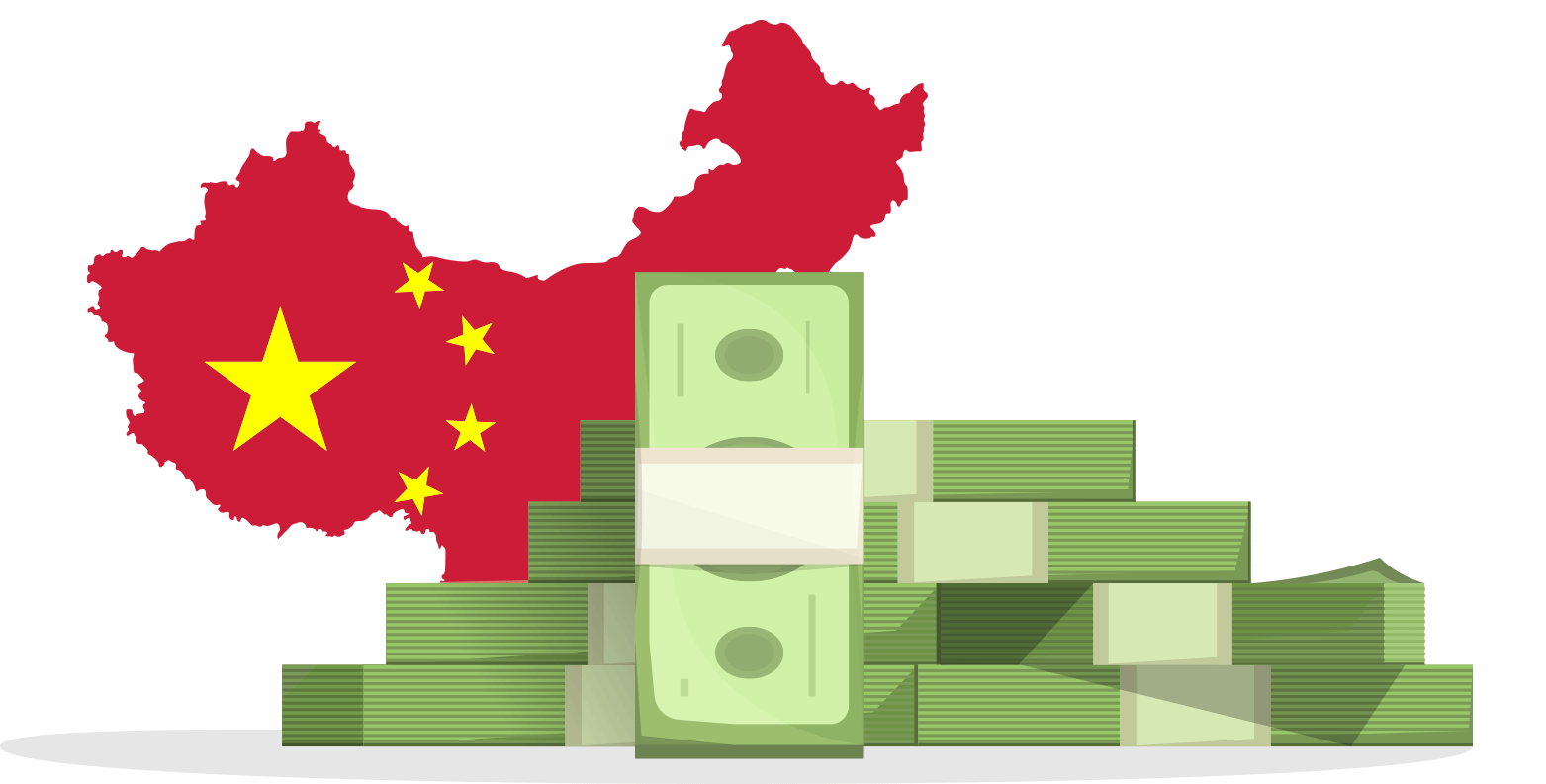

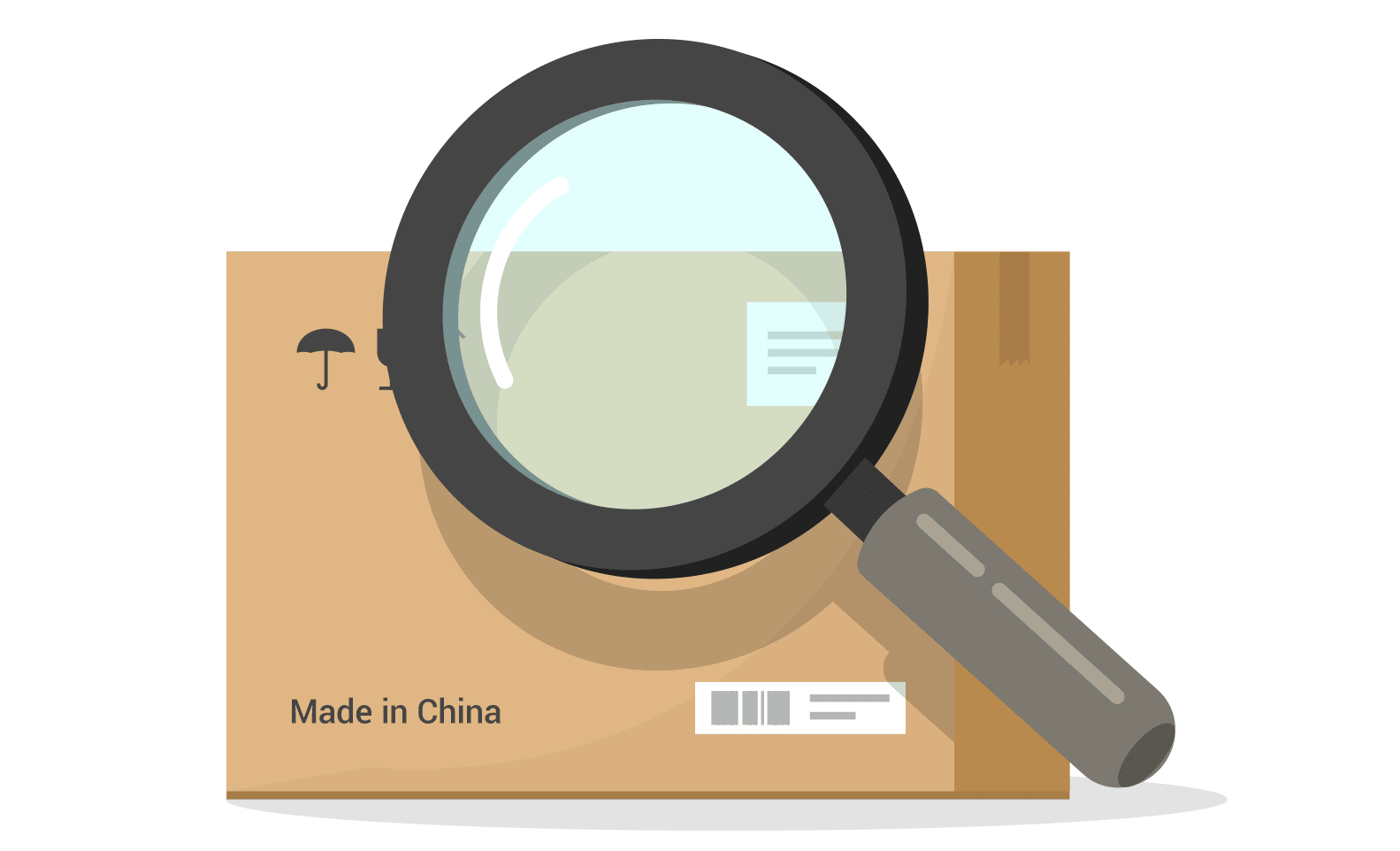
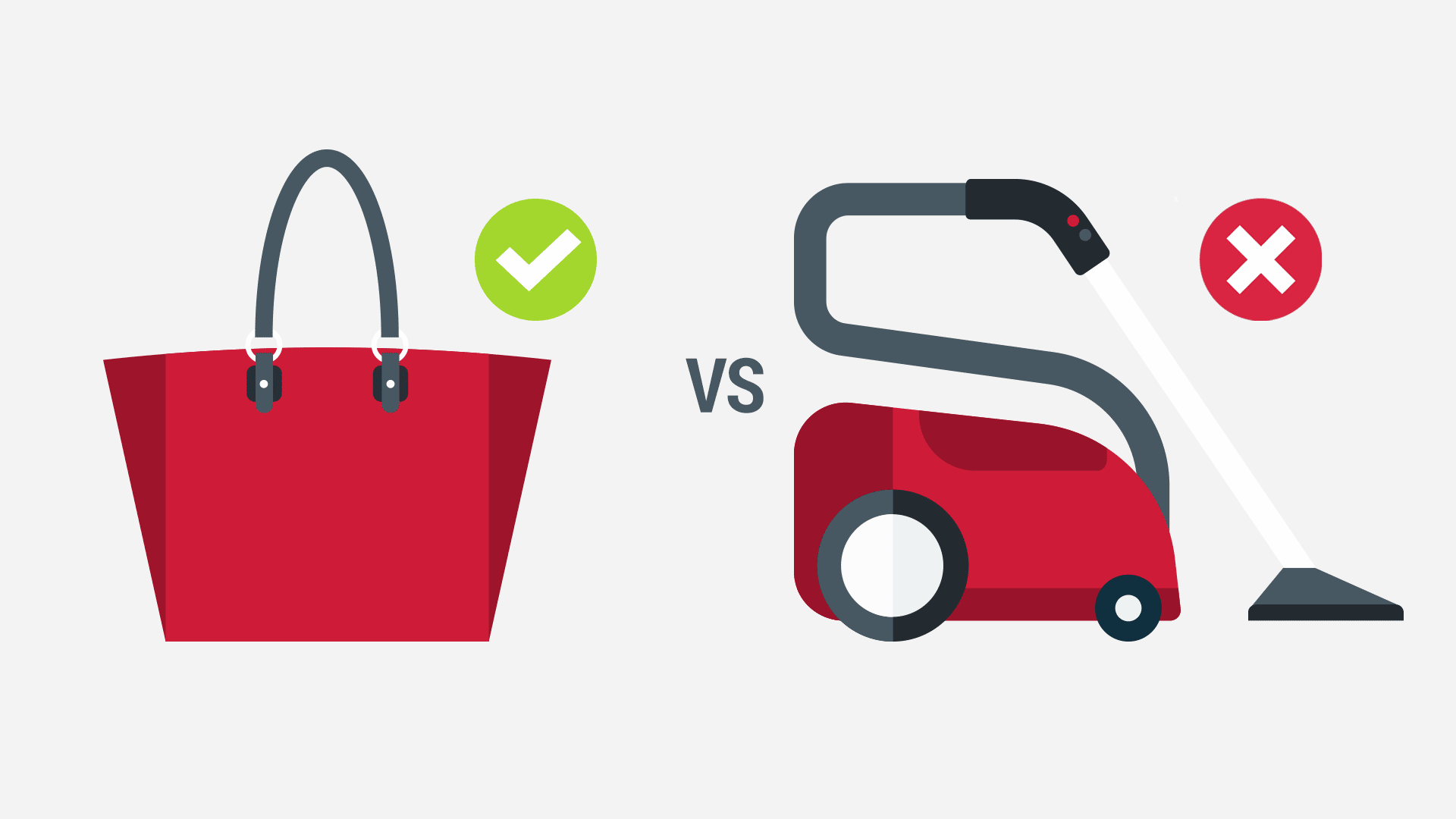

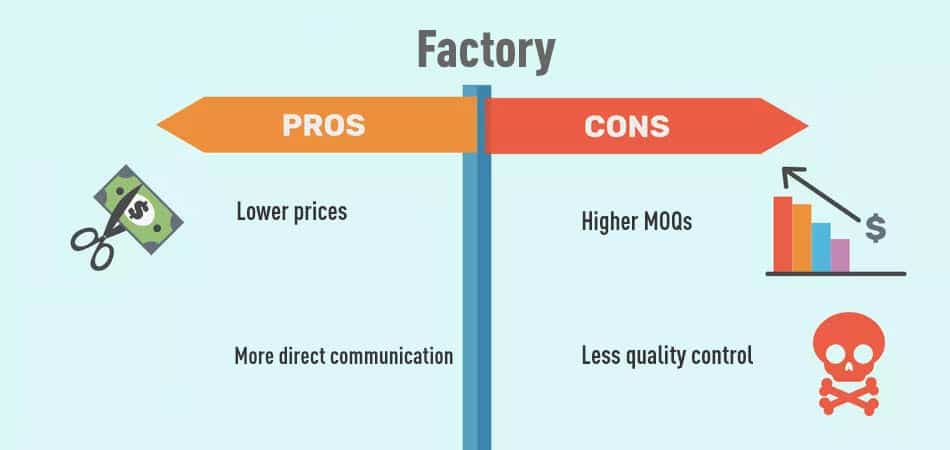
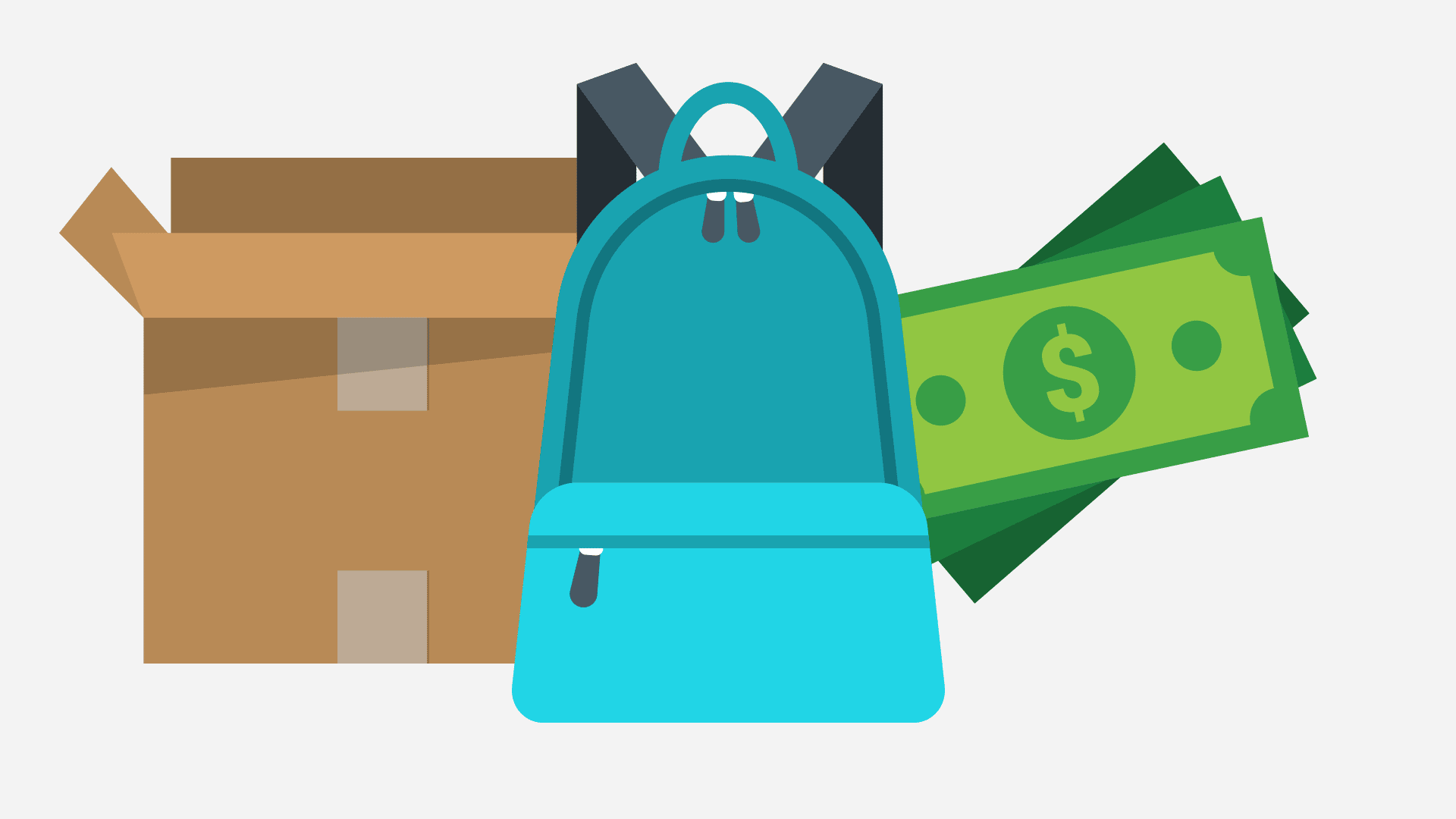
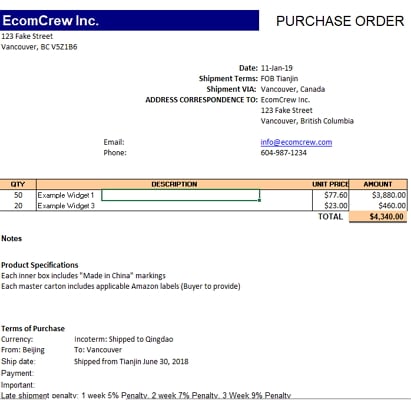
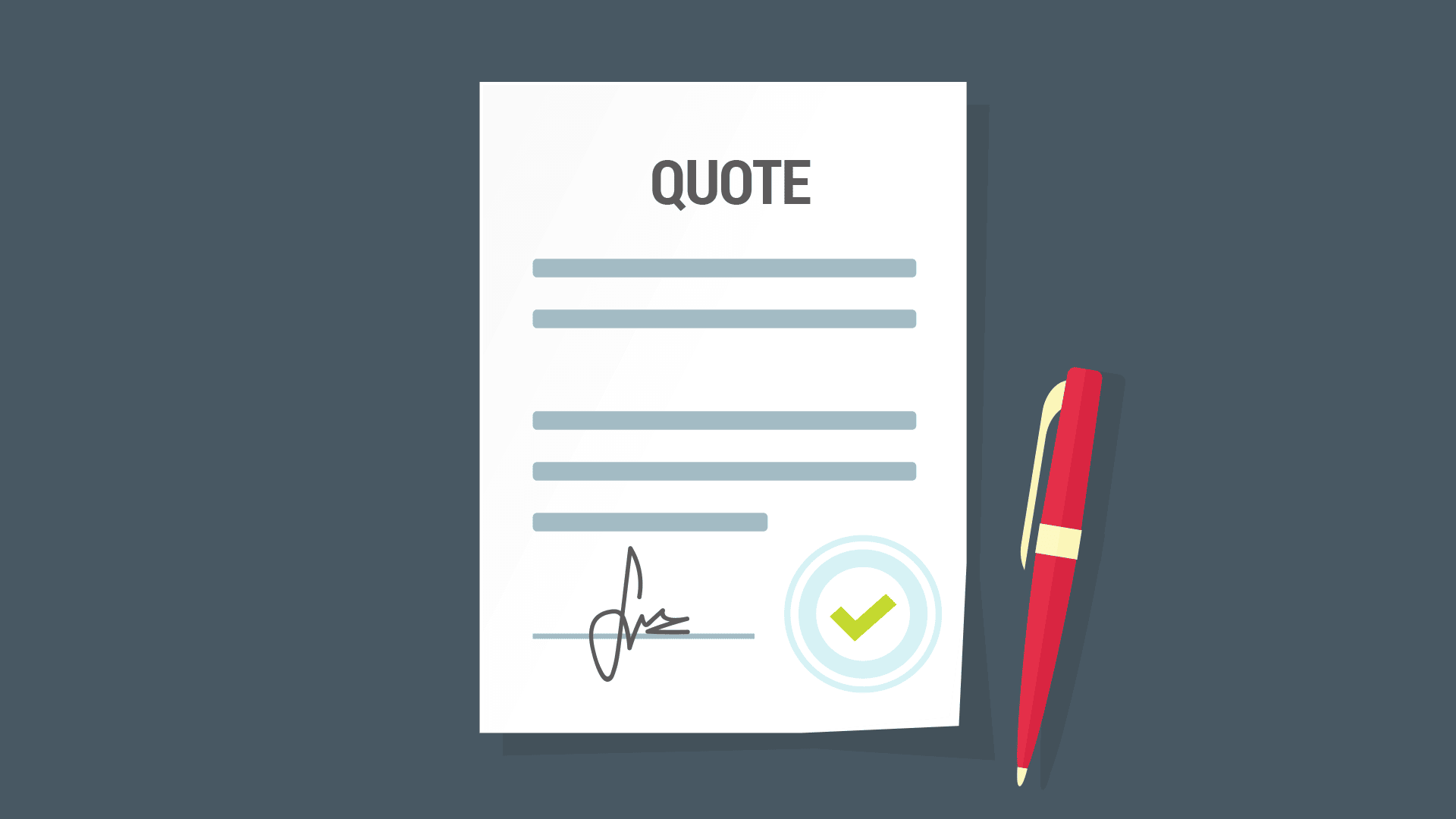
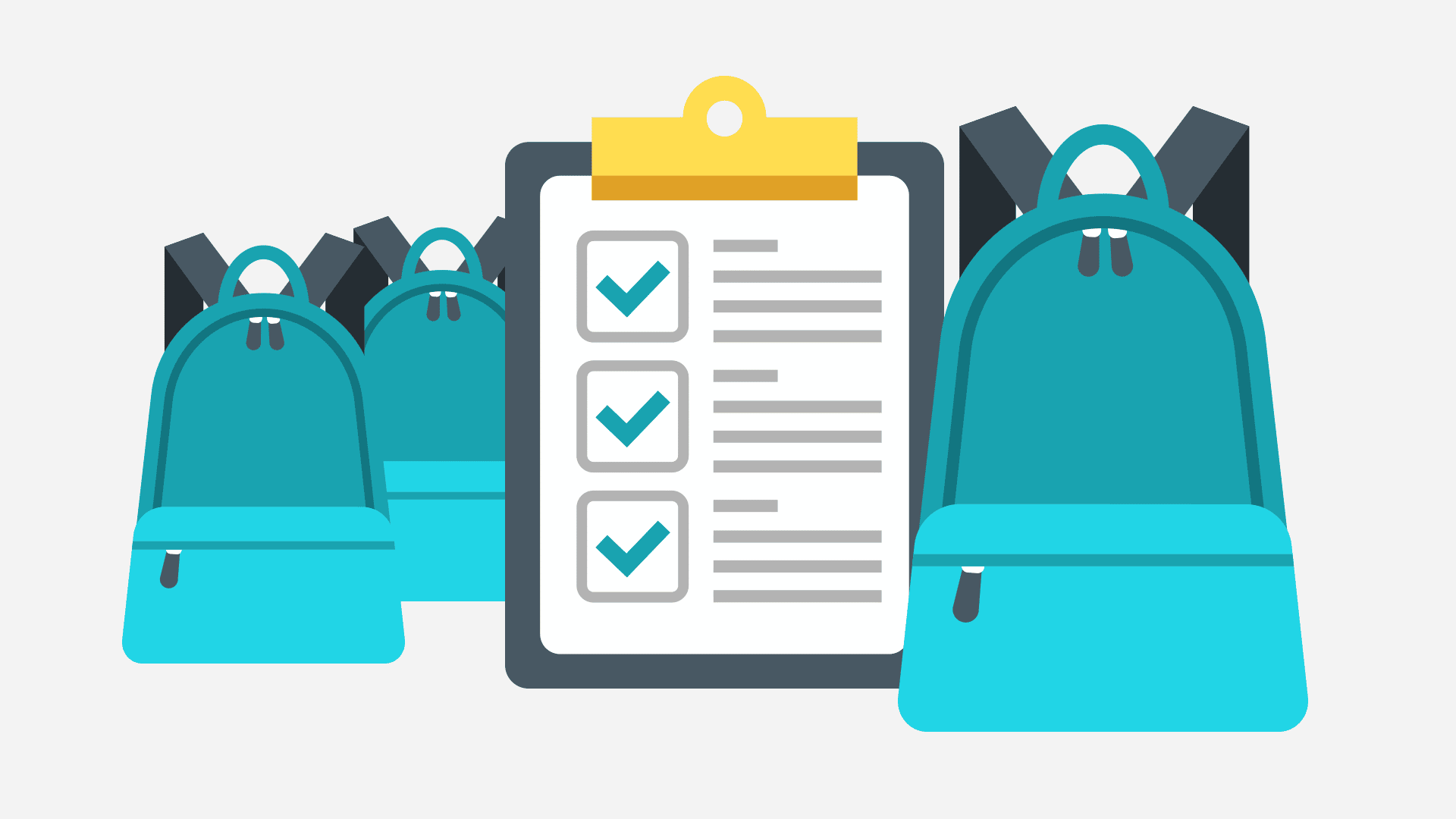
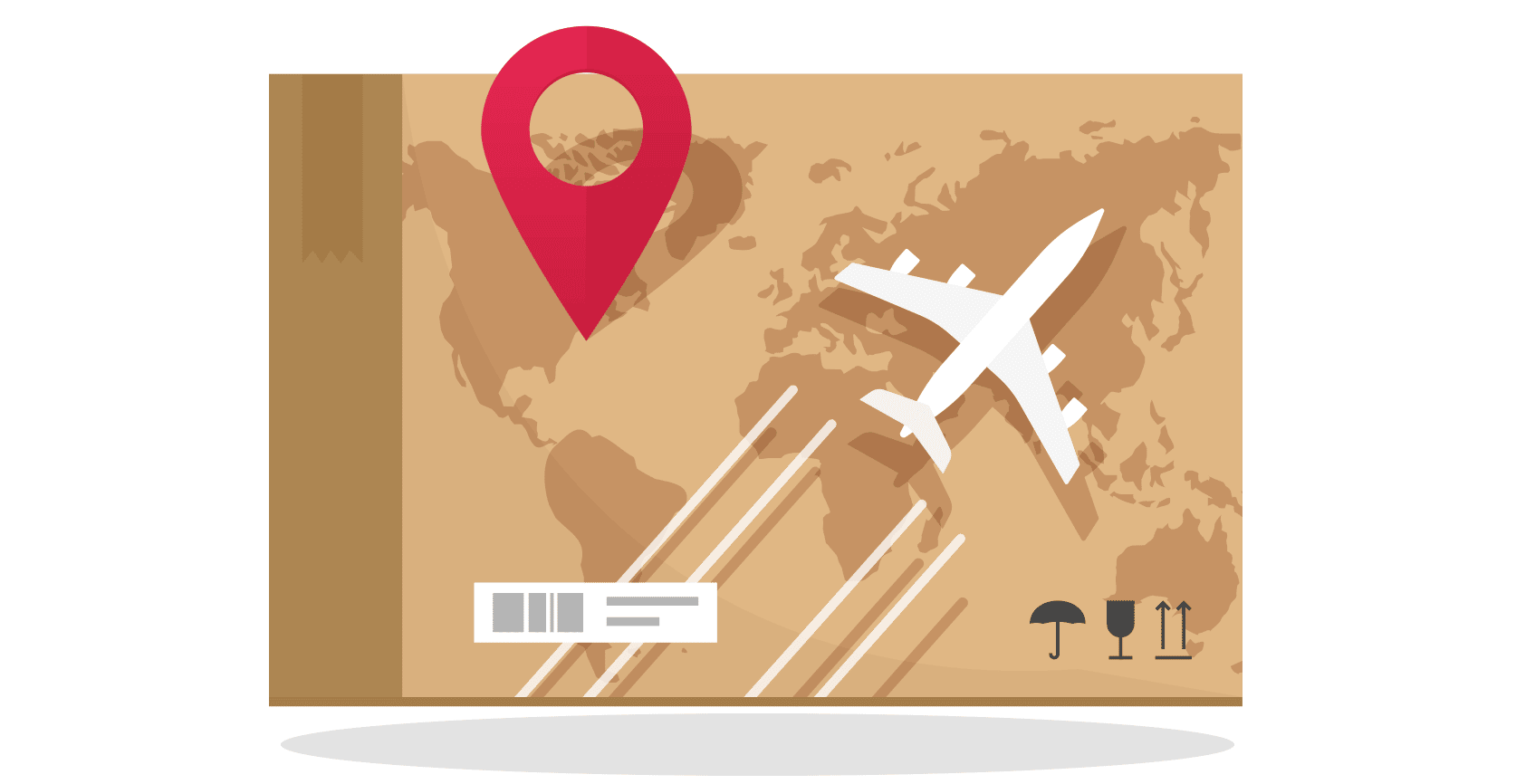
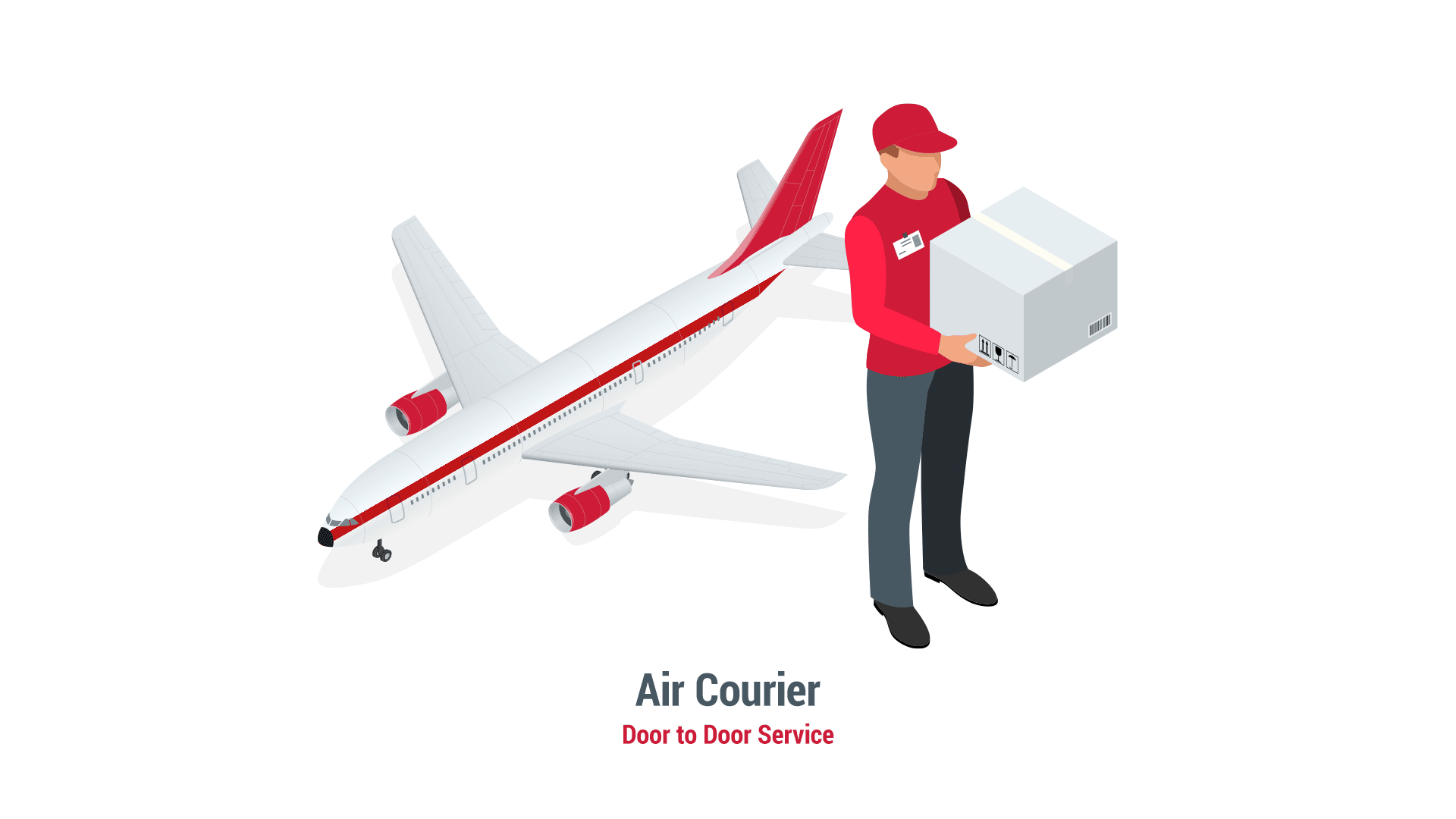
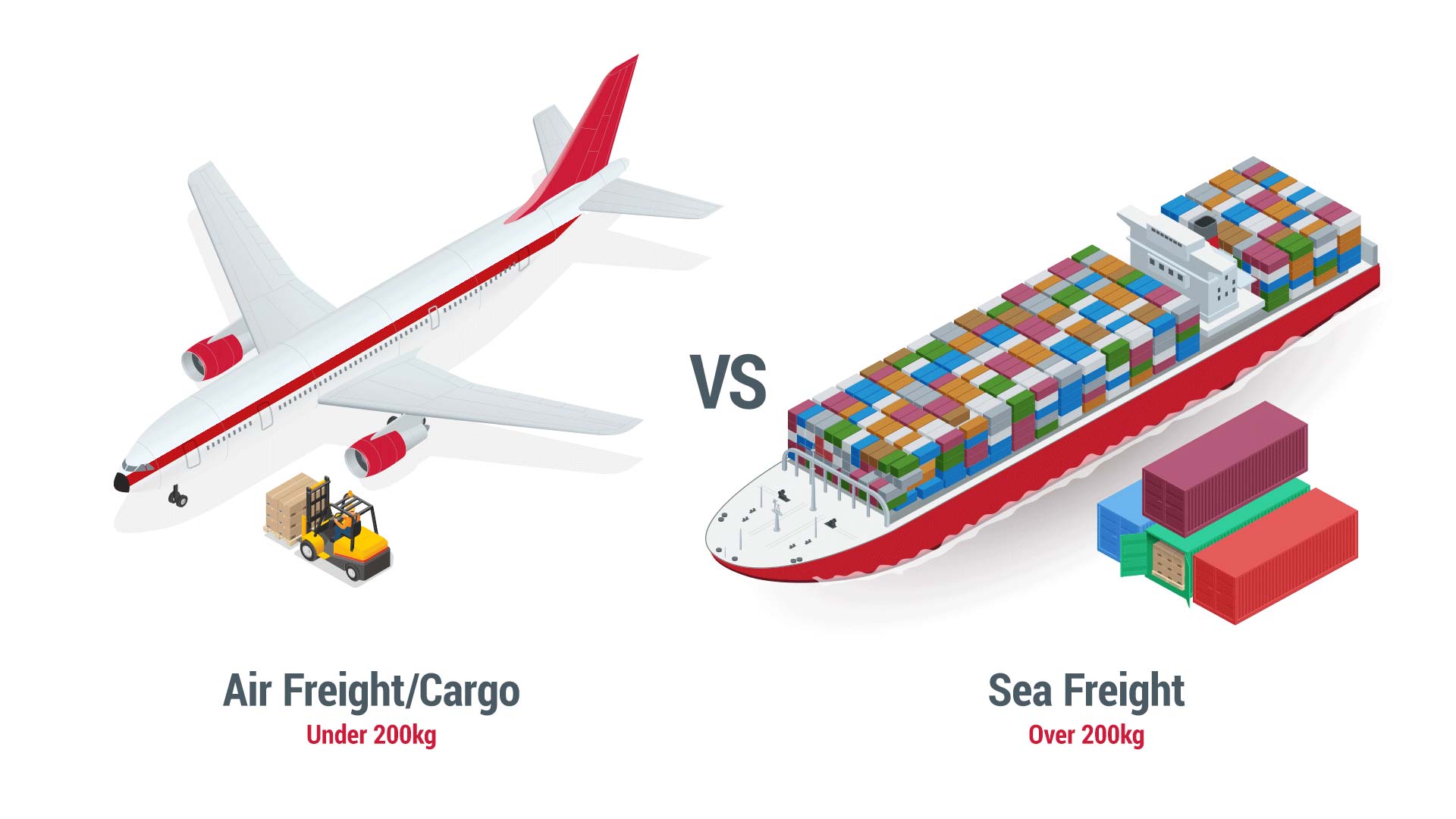
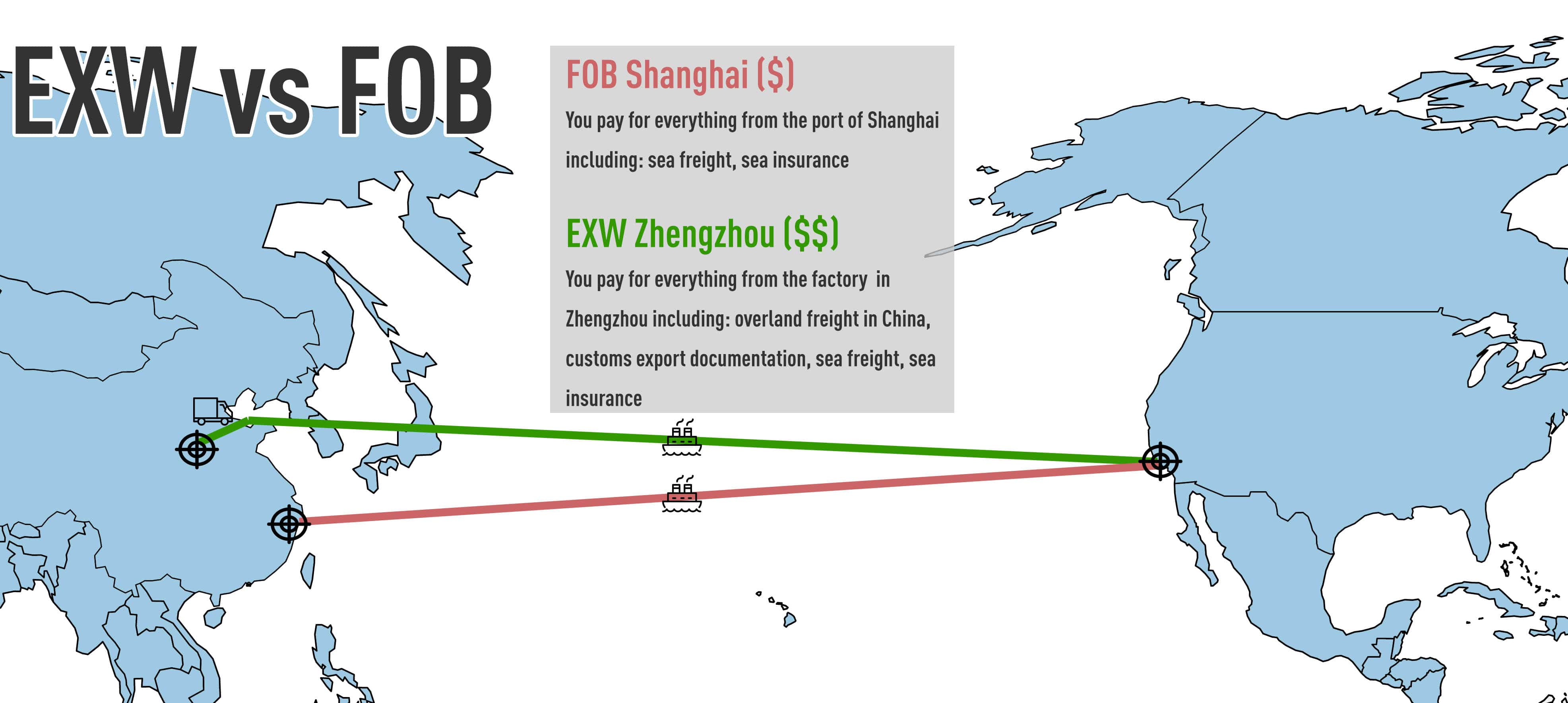




You have brought up a very excellent details , appreciate it for the post.
Thanks, glad it helped!
Hi Dave, do you need any customers support when you sell your merchandise? Do you have any return merchandise over the year? How do you deal with the returns? Thank you for your sharing!
Hi William – dealing with customer returns is a massive topic :) Yes, roughly 5% returns and mostly dispose unfortunately.
I appreciate this article for providing reliable tips . The topic is very useful, Thank you for sharing or posting this blog.
Hello Dave, just curious if you have had experience buying products from china and sell to other countries. I am an exporter in America, mostly export American products. However, I am trying to purchase from China and directly ship from China to other countries, just wondering how the process works in terms of export, taxes etc. Appreciate your response. Anyone here has such experience, appreciate your sharing.
Hi Dave, firstly thanks for your in-depth information. I personally took some clues about how to ship to the US as non-American.
However, on the “safety and scam”, I would urge you and others to be much careful because the trust of chinese online manufacturers is dwindling day by day. This is because the pandemic sparked an increase of “fake chinese companies” online posing to be real. And you can’t trust the Chinese legal system…beware!
This comes from me as a foreigner who has lived in China for 6years with frequent travels to the US and yes, I own a trading company, registered in Hainan, the province where I live.
Thanks and keep up the good work!
Agreed that you need to do your due diligence to make sure the company is the legit in the first place. There’s scammers everywhere. Assuming the company is legit and has some history behind it (i.e. make sure they have a history of exports, even get a factory inspection done) the chances they take your money and run is highly unlikely!
Hello Dave.
Thanks for sharing this knowledge.
I want to start Handbag importation from China to Nigeria. I’m just a starter and would like to know if I should request for samples before ordering fully.
Pls advice.
Hey, Ann!
You should order several samples of an item initially to introduce to your customers and proceed with a larger shipment on the next order. Most suppliers will be willing to ship such a small amount. Also, when asking for a sample, make sure to consider not only the product but also how it is packed.
exactly, sending the TI sample with the designed package will be helpful to save time to production.
Dear Ann
May i know which kind of Handbag you would like to sell
Hi Dave, thank you I am new to the process and I am bringing in some hydraulic cylinders a total of four total is 3,100 but after freight and charges 3,700. I am hearing different types of forms I need to feel out., please advise I have a employee cleared to to get and transport out of port of LA, did I need any extra forms filled out besides telex release Bol?
You need your customs entry done too.
As someone attempting to source products from China for the first time I found this to be generally informative. However, your suggestion that we want to stay away from electrical products is a little naive. Virtually every type of lighting products are manufactured in China, especially seasonal decor like we sell. Good luck trying to find a manufacturer in the U.S. that produces Christmas lights.
I’m not suggesting you aren’t fundamentally correct. If I had a choice I’d buy all of our products from U.S. manufacturer’s, but there are none. So what are the alternatives? I’ve tried Vietnam but the prices I was quoted were too high.
The point I’m making is that you can’t make a blanket suggestion to avoid purchasing electrical products when the choice to do so has effectively been eliminated.
There’s nothing wrong with importing electrical products (or electronics) but I wouldn’t recommend it as a first product for the vast majority of people. Ironically, there’s a HUGE domestic manufacturing base for lighting, re: Slvania lights, but I get your point ;)
Thanks Bryant, some more questions if you allow me, what’s an escrow account and when has to be used, the other question is: do you think it is necessary to go to China to check that the suppliers are reliable?
Thanks again
Escrow is just a third party that holds the money until certain deliverables are met by all parties. No, not necessary to go to China.
I wanted to start a business buying from Alibaba.com. i never import anything before, i saw suppliers selling cars, when i tried contacting the seller i realized that they don’t even have a dealership .i ended up realizing that Alibaba.com is a scam or fraudulent, i don’t know where to import because I am now scared.
Definitely don’t recommend buying cars on Alibaba :)
Hello Dave, thank you very much for your articles, they have been quite beneficial for me, they have helped me to see many more details of which I had no idea.
In the past I have brought machines from China worth over $ 8,000.00 without any problem because I did it through Alibaba and basically everything was very easy because they take you by the hand and your money is protected by the same platform.
Now I want to buy from other companies that have no relationship with Alibaba and I have no idea how to protect my money so that I will not be a victim of a fraud; I already went through the process of finding the right company that manufactures the exact product I need, my question would then be: what should I do so that they don’t scam me? Are there companies that advise you at the beginning of the purchase and that protects your money as Alibaba does it through its “Trade Assurance” program?
Thanks in advance for your valuable help
Ben
Arrange an inspection through QIMA.com (factory verification audits are cheap).
For long time I have been looking for a solid answer of my question. How to define quality to my Chinese supplier? You are telling to ask my supplier. But what if they give me incomplete information or just give wrong info. I do not want to be on the mercy of my supplier. I want to define first and then ask for that quality. How to do it?
Hi Dave,
really good artcicle. A lot of value to it.
Do you have a sample of total custom tariff fee? If i want to import a FCL container of 40HC goods , i wanna know what cost would goes into my import products such as landing cost, custom fees and import tariff. Can you give me a example.
Tariffs are really dependent on the product. Most are 25%+ now with Trumps tariffs though. Freight cost ranges but from China to West Coast of America it’s normally around $3000-5000 landed without duties.
Hey Dave,
Great article, it has been truly helpful!
I was wondering if I am ordering from China goods that are worth about $10,000 USD, can I have them shipped to my home address ( the goods would be shipped through air freight)? Also could you explain a bit more how customs bond work?
Thanks!
Hi,
Just wondering if you can help regarding shipping from china to UK?
Thanks
Sorry, we dont’ do freight.
Hi Dave
I am located in the UK and I’m looking to venture into my first import, private label deal. Can you summarise the process step by step if possible please.
Where do I start?
What do I need to do?
What are the legal requirements?
I have a new business and I’m looking at an initial budget of up to 5k and I have a range of products in mind.
Kind Regards
Patrick
So could you have a supplier ship <$800 worth of COGS in bulk to a US Fulfillment Center every day/every other day? Would that be recommended to avoid the tariffs and allow you to fulfill domestically?
Officially CBP you’re not allowed to deliberately break a shipment up into smaller shipments to avoid duties.
Hi Dave,
Thanks for a great write up!
My GF and I are about to ship our first shipment from China to US, The shipment value is $2700. We were wondering if we can ask our Chinese supplier to divide our shipment to 4 different batches in order to avoid dealing with customs and the rest of the bureaucracy.
What do you think of this? doing so will get us in trouble, or is it a legitimate tactic?
Would love to hear your take on this.
Much appreciated,
Teddy
P.S – What 3PL companies your recommend in the U.S (other than Amazon FBA) ?
A lot of people do it this way on a very large scale. Officially you’re not supposed to do this. I’d suspect very little chance you’d ever catch anyone’s ire for a few grand in products though.
Hi. Great advice. We are looking to import a product for 1 client in large quantities. In my initial inquiries prices seem really good, but now other charges are showing up. They are saying we will need a container, is that something we need to buy, or is there a usage fee? Also, there is now talk of tariffs, how can I find out if our product will be subject to Chinese export tariffs? So far I don’t find the material listed on the US tariff lists that I’ve seen. Is there a good resource for getting this info?
Thank you.
Your freight forwarder will arrange the container for you. Check out https://www.ecomcrew.com/trumps-china-tariffs/
Thank you for that informative post.
Ian new to the importing world and about to launch my food start up. I have a supplier which I found on Alibaba ( got samples and quality control) his price if FOB. My question is more about the next step…. my product is glass jars food grade in costs of about $6k.
How can I calculate the whole!!! Expenses other than paying him? What exactly am I looking for ? Should I consider using one service for all the next steps?( (getting it to the factory.) or should I use few providers. Hope I was able to explain myself. Thank you in advance.
Hi Tal – Check out this: https://www.ecomcrew.com/amazon-selling-fees/
Very helpful
Regarding your advice “Order several samples and try selling them on Amazon before committing to a larger order.”
What criteria have you used as “proof of concept”? Number of units sold etc. Also, if it’s successful do you sell your mass produced product on the same or different amazon listing? My concern would be lack of sales velocity in the period from test product to mass produced product.
Any help appreciated. Thanks!
Normally I want to see somewhere in a pro-rated $5000/month rate. Varies by product though. Yes, normally I sell on the same listing that listing gets reviews. If no reviews then I’ll relaunch on a new ASIN.
Thanks for great sharing. Almost covers all the pro and cons by importing from China, and the comment on the Chinese factory is fair. I am Chinese-Canadian and currently lived in China, be specify JinJiang, Fujian (where the large amount of shoes and clothing companies run). I know the local industry well, and now running a shoes company and a trading company.So if anyone interests in this field or needs helping feel free to contact me. I can physically present in factory and manage everything on producing side.
Looking for a manufacturer to make my patent pending knee pad and shipped to US.
Best of luck!
My company is based in US, while we work with a separate company in China (I’ll refer to as our partner). We purchase our supplies from our China partners and then we sell to our customers here in US. Our partners in China perform our factory audits as well as negotiations.
We shipped FOB and used our customers freight forwarder, so they are considered the “importers of record”. We were informed that we had to submit the original commercial invoice from our partners in China (pricing we paid) to clear US Customs. The tariff taxes/duties would be calculated from that pricing and charged to our customer (importer of record).
*** Problem is – this allows our customer to know our costs which is not what we want.
*** Why can’t we submit our customers commercial invoice to US Customs – which reflects the price they paid to us?
Any guidance/advice you are able to share would be greatly valued.
Hi Tina, I’m not sure the exact law, but I believe the price has to be that of the exporter. Also, your partner will not want a higher price shown as they’ll pay export fees on those higher prices. Better to clear goods yourself into America if possible.
I appreciate the comment, Dave. Love the podcast. Thanks for being a great resource.
Thanks Dan!
Hi Guys,
I have ordered samples from China that will be here next week. As long as the quality is good, we plan on using the samples as giveaways during our ClickFunnel month long contest. The contest will take a month, in which time we know if we should make a full order. Is there a way I can make the turn around time of contest to selling on Amazon? Or is it normal business to have to wait for the contest and the 40ish days to receive product to sell?
Unfortunately it’s normal and hard to shorten that time :(
Hi Dave,
Can you please tell me about factories that sell at cheaper rates
There’s some factories that sell at cheaper rates :)
Hi! I’m confused about the $2500.
Question1: If I purchase a large spa tub for under $2500 can I just have it shipped to Houston port and then bypass customs and simply pick it up myself when it arrives?
Question 2: Also, if I’m purchasing a large spa tub for a total of 2400 and shipping will be 375 to the Houston port. Since I’m paying $2400 for the tub will the shipping push it above the $2500 or is only the item price considered?
Any help you can give me would be great thank you!
1) Under $800 you’ll bypass customs. Under $2500 you’ll still need customs clearance/pay applicable duties but you forego some other formalities.
2) It can depend but normally it doesn’t count towards it.
Hi
There are any accumulative account? , i mean, I buy a product and import it via DHL at a cost of 400 uds, in the next month make other 400 usd purchase and so on, there are a cuantity were a need to pay taxes? thanks
No, it’s a per day limit.
How many times can I import under 800? Are there any time windows in between each import to clear that amount?
Hello, I found your website very useful and appreciate the whole information given. Currently I am living in China and it’s been 3 years now. I have been trying to get a hold on this international trading business but may need some guidance. I speak English, Chinese and Turkish fluently and have some background in the business. I was thinking about buying some quality products here, since I am in china and speak the language getting them wont be a problem for me, and ship them to AMAZON warehouse but not quite sure if I am able to do that since I am not a US Citizen and have never been to US. What would you suggest me to do in my case? I am open to all kind of suggestions. Thanks (I will try work and travel next summer and may find a way to start Amazon)
Amazing language abilities!! 3 of those most important language families in the world. Check out this article here: https://www.ecomcrew.com/how-non-americans-can-sell-in-america-including-amazon-com-fba/. You don’t need to be a U.S. citizen (and I’m not in fact).
Beautiful write up Dave.
Thank you!
Dave have you ever used a sourcing agent to help you find suppliers that can do more customized work?
Hi Michael, Yes Mike and I have both used them to a certain degree although they typically only deal with larger orders.
I think your program and podcasts are awesome, looking forward to working with you guys
Thanks Justin!
Dave, awesome post
Thanks again!
Hi Dave,
Awesome post, very informative!
In regards to getting inspections done, do you get an inspection done for every single Purchase Order?
Thank you,
Vlad!
Hi Vlad,
I normally try to get 30-50% of shipments inspected. Anything over $30,000 I almost always get inspected though.
Hi Dave, great summary of the process! Really take the point about quality fade. Something to be very vigilant on.
I’m off to Hong Kong for a couple of trade fairs in April. I think you guys recommend to make sure you have some products in mind before getting there yes? Otherwise it can be overwhelming. Do you ever just find some products – or even suppliers – at these things that just hit the mark on the day? They’re the smaller of the shows… Houseware Fair and maybe Global Sources, though I’m told the latter is a bit lacklustre.
Cheers.
It’s very difficult to find products on the fly but I always go to find Suppliers on the fly (although sometimes I have a ‘hit list’ of Suppliers I want to see). Everything looks good in the moment and you really need to do some product research before hand.
Hi Mike & Dave, what’s your take on finding a supplier/ordering wholesale from 1688? Recommend any agents to bypass the payment/shipping restrictions? Thanks a bunch and keep up the great work!
Hi Mark,
I’ve never used it personally but I know Chinese companies basically use it exclusively when sourcing any products (largely B2B). You could always ask a current Supplier to buy or you – most are surprisingly happy to help in situations like this if you’re a good client.
Hey guys, i have a situation that I am not qualified to make an experienced judgment on.
I’m positioning a new product as an upscale brand, priced at the high end (similar to high-end competitors’ price) but without their brand cachet.
Recently I was thinking about providing more value to my customers and found a bundle item i could include that is pretty much a no-brainer. It’s cheap for me to provide and my customers will get value out of it, so it’s a win-win.
The problem is that I have slight doubts about bundling more value into my “luxury” brand. I fear my customers will be getting mixed messages. Instead of thinking about the luxury item they are getting, they will start thinking about “value” if they see the bundle, and “value” is not the message luxury brands want to send (at least that’s what my limited instinct tells me).
If anyone can provide helpful insights I’d appreciate your thoughts. Thanks!
It depends what the item you’re bundling. Coach bundles a carrying case and cleaning cloth with their sunglasses and it strengthens the brand. It’s hard to judge without knowing the exact item but IMO if it’s an immediate accessory/add-on for the item it strengthens it. I think it’s pretty hard to weaken a brand by bundling including an add-on or accessory.